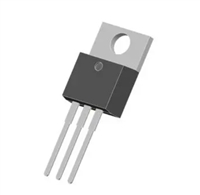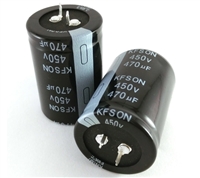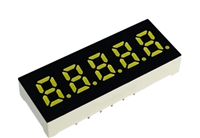| 生命周期: | Obsolete | 零件包装代码: | QFP |
| 包装说明: | LQFP, | 针数: | 32 |
| Reach Compliance Code: | unknown | ECCN代码: | EAR99 |
| HTS代码: | 8542.39.00.01 | 风险等级: | 5.52 |
| Is Samacsys: | N | JESD-30 代码: | S-PQFP-G32 |
| 长度: | 7 mm | 端子数量: | 32 |
| 最高工作温度: | 70 °C | 最低工作温度: | |
| 最大输出时钟频率: | 900 MHz | 封装主体材料: | PLASTIC/EPOXY |
| 封装代码: | LQFP | 封装形状: | SQUARE |
| 封装形式: | FLATPACK, LOW PROFILE | 主时钟/晶体标称频率: | 20 MHz |
| 认证状态: | Not Qualified | 座面最大高度: | 1.6 mm |
| 最大供电电压: | 3.465 V | 最小供电电压: | 3.135 V |
| 标称供电电压: | 3.3 V | 表面贴装: | YES |
| 技术: | CMOS | 温度等级: | COMMERCIAL |
| 端子形式: | GULL WING | 端子节距: | 0.8 mm |
| 端子位置: | QUAD | 宽度: | 7 mm |
| uPs/uCs/外围集成电路类型: | CLOCK GENERATOR, OTHER | Base Number Matches: | 1 |
| 型号 | 品牌 | 获取价格 | 描述 | 数据表 |
| MPC9259FA | FREESCALE |
获取价格 |
900 MHz LOW VOLTAGE LVDS CLOCK SYNTHESIZER |

|
| MPC9259FA | MOTOROLA |
获取价格 |
900 MHz LOW VOLTAGE LVDS CLOCK SYNTHESIZER |

|
| MPC926508SD | NXP |
获取价格 |
IC,CPU SYSTEM CLOCK GENERATOR,CMOS,SSOP,20PIN,PLASTIC |

|
| MPC926508SD | IDT |
获取价格 |
Processor Specific Clock Generator, 133.33MHz, CMOS, PDSO20, 0.150 INCH, SSOP-20 |

|
| MPC926508SD | MOTOROLA |
获取价格 |
Processor Specific Clock Generator, 133.33MHz, CMOS, PDSO20, SSOP-20 |

|
| MPC9299FA | MOTOROLA |
获取价格 |
Clock Generator, 400MHz, CMOS, PQFP32, LQFP-32 |

|
| MPC9299FN | MOTOROLA |
获取价格 |
400 MHz, OTHER CLOCK GENERATOR, PQCC28, PLASTIC, LCC-28 |

|
| MPC930 | MOTOROLA |
获取价格 |
LOW VOLTAGE PLL CLOCK DRIVER |

|
| MPC930FA | MOTOROLA |
获取价格 |
Processor Specific Clock Generator, 140MHz, CMOS, PQFP32, PLASTIC, TQFP-32 |

|
| MPC930FAR2 | MOTOROLA |
获取价格 |
140MHz, PROC SPECIFIC CLOCK GENERATOR, PQFP32, TQFP-32 |

|
 MBRS340T3G手册解读:参数说明、产品特性及应用
MBRS340T3G手册解读:参数说明、产品特性及应用

 PMOS管背靠背连接:串联还是并联?
PMOS管背靠背连接:串联还是并联?

 高压电解电容的分类与选型策略
高压电解电容的分类与选型策略

 数码管:基本概念、分类、技术发展及市场趋势
数码管:基本概念、分类、技术发展及市场趋势
